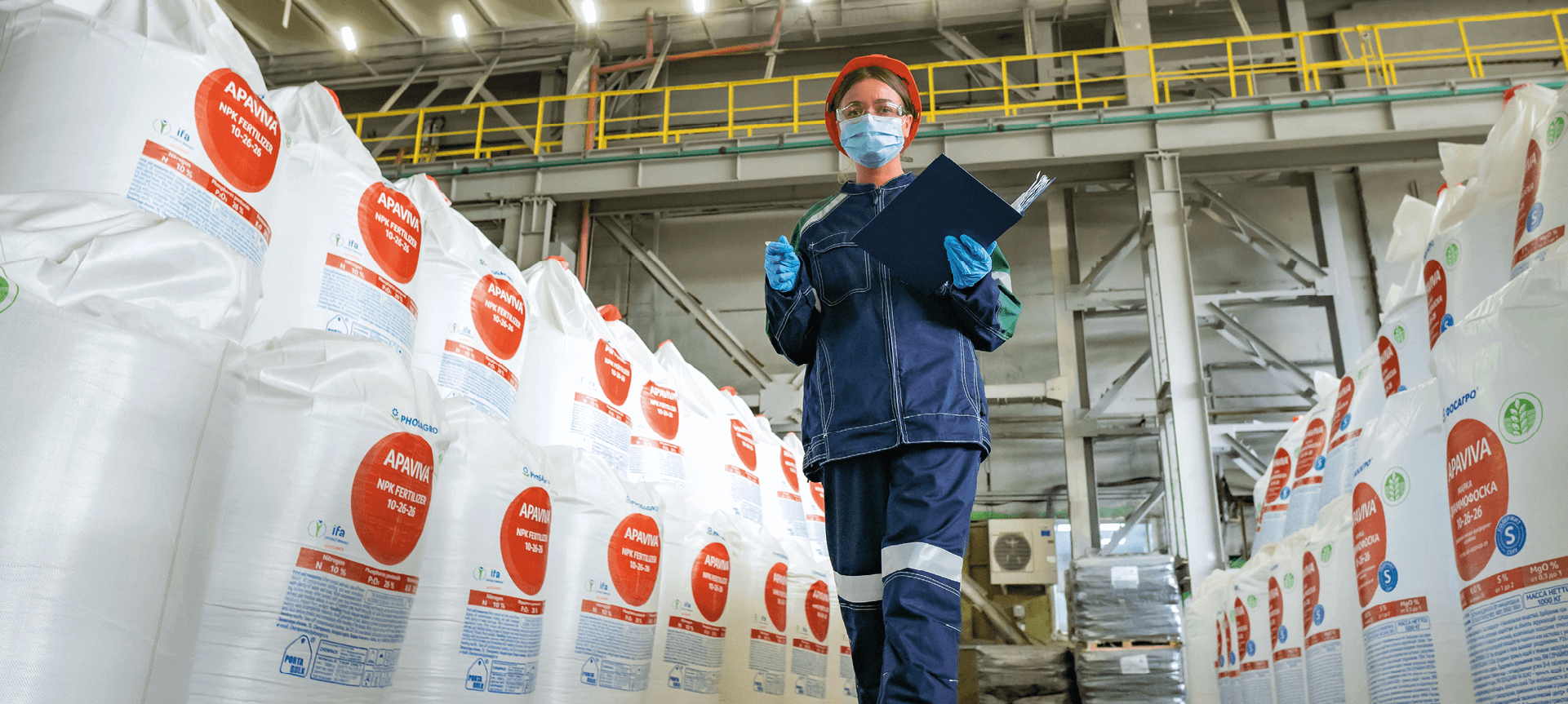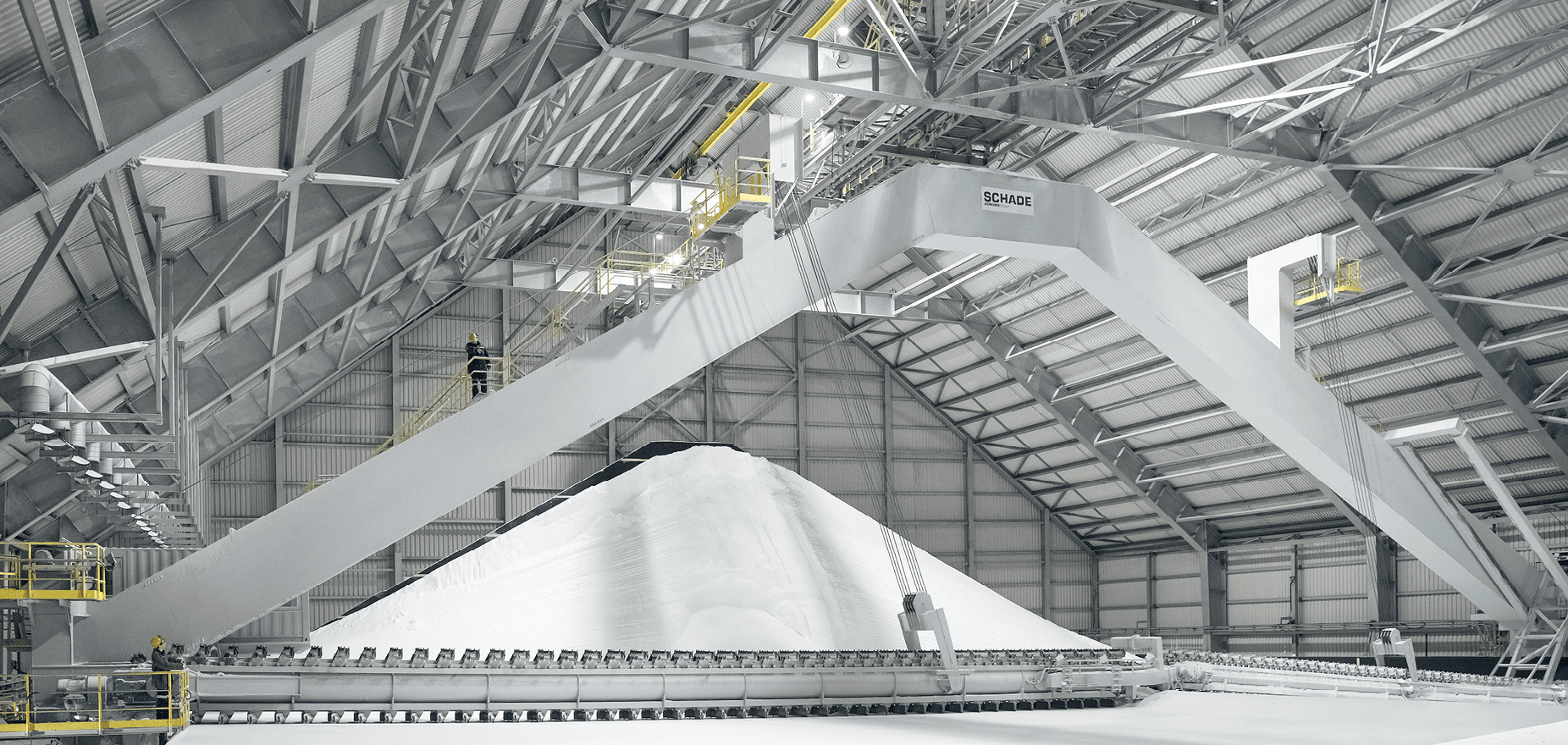Operating efficiency and production growth

Capacity expansion
Key projects under the Strategy to 2025: Technical upgrade of main shaft No. 1 at the combined Kirovsky underground mine for rock and ore delivery
Project completed in 2020
Objectives: Restore the operability of main shaft No. 1 to increase the ore delivery capacity at the combined Kirovsky underground mine to 3 mtpa, streamline the transportation flowsheet to improve delivery of rock from the excavation area to the surface
Project schedule: 2018–2020
Current status: Design ore delivery capacity reached
Key projects under the Strategy to 2025: Stripping and mine development preparations: +10 m at the combined Kirovsky underground mine
First start-up facility
Project in progress
Objectives: Ramp up mining capacity and streamline transportation flowsheet at the Kirovsky mine. Achieve the maximum production capacity of 8.8 mln t by 2028
Project schedule: 2016–2021
(first start-up facility)
Current status: Underground construction in progress. Core equipment for crushing and delivery unit No. 1 received
Key projects under the Strategy to 2025: Development of the Volkhov branch of Apatit
First project stage
Project completed in 2020
Objectives: Improve the financial and operating performance of Apatit’s Volkhov branch by increasing the gross output of phosphate-based mineral fertilizers boasting high margins thanks to the branch’s logistic strengths
Project schedule:
First stage: 2018–2020
Second stage: 2021–2022
Current status: From October 2020, the Company began temporary production of NPS 16:20, with the intention to switch to МАР 12:52 in February 2021.
Key projects under the Strategy to 2025: The second stage of development at the Balakovo site: ramp-up of the ammonium sulphate production capacity to 360 ktpa
Project in progress
Objectives: Increase the ammonium sulphate production capacity at the Balakovo site to 360 kt by re-equipping technological systems No. 5 and 6 of the phosphate fertilizers unit and upgrading vacuum evaporation units 1–9
Project schedule: 2020–2022
Current status: Tender procedures in progress, with ongoing manufacturing and delivery of core process equipment
Progress towards our targets
The integrated report includes only selected projects of the Strategy to 2025. Our large-scale investment programme features a number of promising projects bringing us closer to the strategic goals.
Higher self-sufficiency in feedstock
Vertical integration is an important driver of success in a highly competitive market environment. The Company has increased its self-sufficiency in feedstock by ramping up production of key commodities. This is the secret behind PhosAgro’s standing as one of the most efficient company among global fertilizer players. Vertical integration in the segments of phosphate rock, sulphuric acid and ammonia is an important advantage for successful competition with other producers.
Key projects under the Strategy to 2025The integrated report includes only selected projects of the Strategy to 2025. Our large-scale investment programme features a number of promising projects bringing us closer to the strategic goals.: Sulphuric acid production unit with a capacity of 3.3 kt per day
Project completed in 2020
Objectives: Сonstruction of the fifth sulphuric acid production unit with a capacity of 3.3 kt per day and infrastructure facilities in Cherepovets for the replacement of externally sourced sulphuric acid with internally produced supplies
Project schedule: 2017–2020
Current status: Put into operation in March 2020 with the confirmation of design capacity attainment. Commissioning permit obtained in December 2020, with fixed assets recorded on the books
Key projects under the Strategy to 2025The integrated report includes only selected projects of the Strategy to 2025. Our large-scale investment programme features a number of promising projects bringing us closer to the strategic goals.: The third stage of development at the Balakovo site: capacity ramp-up of the SK-20 sulphuric acid unit to 3.3 kt per day
Project in progress
Objectives: Capacity ramp-up of the SK-20 technological system in Balakovo to 3.3 kt per day as a way to reduce the volumes of sulphuric acid sourced from external suppliers for the needs of the Balakovo production site
Project schedule: 2021–2022
Current status: Preparation of design documents in progress
Progress towards our targets
| Item | 2019 | 2020 | 2021 | 2025 |
|---|---|---|---|---|
| Ammonia, % | 86.0 | 83.0 | 78.0 | 76.0 |
| Production, mln t | 1.9 | 2.0 | 1.9 | 1.9 |
| Consumption, mln t | 2.2 | 2.4 | 2.4 | 2.5 |
| Sulphuric acid, % | 88.0 | 93.0 | 94.0 | 91.0 |
| Production, mln t | 6.1 | 6.8 | 7.4 | 7.8 |
| Consumption, mln t | 6.9 | 7.3 | 7.9 | 8.6 |
| Electricity, % | 41 | 40 | 42 | 42 |
| Generation, bln kWh | 1.5 | 1.5 | 1.6 | 1.8 |
| Consumption, bln kWh | 3.7 | 3.8 | 3.9 | 4.4 |
| Ammonium sulphate,% | 3.0 | 55.0 | 51.0 | 75.0 |
| Production, mln t | 0.0 | 0.3 | 0.3 | 0.7 |
| Consumption, mln t | 0.4 | 0.5 | 0.6 | 0.9 |
| Item | 2019 | 2020 | 2021 |
|---|---|---|---|
| Investment projects | 20.8 | 23.9 | 28.4 |
| Maintenance | 13.3 | 10.2 | 11.3 |
| Non-industrial construction | 1.9 | 2.2 | 1.8 |
| Total | 36.0 | 36.3 | 41.5 |
NEW PROMISING PROJECTS
All of the Company’s projects meet the economic efficiency criteria approved by the Board of Directors as part of the Strategy (IRR above 20%) and aim to promote further development in line with strategic priorities, drive progressive production growth, implement innovations and ESG-compliant products and processes, and boost operating efficiency.
Re-equipment of the aluminium fluoride shop in Cherepovets
Increase aluminium fluoride production from 48 to 58 ktpa by making arrangements for the transportation and acceptance of fluosilicate acid from Balakovo and boost processing of internally produced fluosilicate acid from 58 to 73 ktpa by re-equipping the aluminium fluoride shop
Project schedule: 2019–2021
| Targets | Investments | Economic performance | |
|---|---|---|---|
| Aluminium fluoride | DPP | IRR | |
| First stage | |||
| +10 kt | 0.5 RUB bln | 1 year | 100% |
| Second stage | |||
| +15 kt | 2.8 RUB bln | 9 years | 18% |
Current status: Key works to prepare the construction site completed, with the re-equipment of the aluminium fluoride shop commenced in December
Environmental agenda
Addressing climate issues and saving energy and other resources is integral to the Company’s Development Strategy. Every addition to our production capacities is designed to employ the best available techniques and used in strict compliance with sustainability requirements. We are working to make sure that a project’s assessment takes into account its environmental impacts. One of the steps we consider for 2021 is including a carbon price as a factor in our final investment decisions. In 2020, the Board of Directors completed the integration of PhosAgro’s climate and environmental agendas into its business strategy by approving Climate and Water strategies that set measurable, achievable targets for minimising the Company’s environmental footprint through specific initiatives.
The Climate Strategy, which was adopted in December, focuses on further cuts to GHG emissions, including indirect ones associated with generating power for our production facilities. It is based on a low-carbon transition plan that we use as a guidance in devising and implementing technical, technological and organisational measures. We are committed to making our operations as green and energy-efficient as possible.
Adoption of Climate and Water
strategies and implementation of the Energy Efficiency Programme
Contribution to UN SDGs
Strategic environmental goals
Projects implemented as part of Strategy to 2025 are fully compliant with environmental requirements and contribute to the achievement of our environmental goals.
Reduction in specific effluents by 2025
Reduction in specific pollutant emissions by 2025
Reduction in specific GHG emissions (Scopes 1, 2, and 3) by 2028
Increase in the share of recycled and decontaminated hazard class 1–4 waste
Increasing energy efficiency
Stronger operating efficiency
| Key projects under the Strategy to 2025The integrated report includes only selected projects of the Strategy to 2025. Our large-scale investment programme features a number of promising projects bringing us closer to the strategic goals. | Objectives: | |
|---|---|---|
| Improving operating efficiency at Apatit and its Balakovo and Volkhov branches Project completed in 2020 | to revise the economic loss allocation approach and improve the accuracy of management accounting; to develop organisational and technical measures for reducing phosphate rock losses in wet-process phosphoric acid production at Apatit and its Balakovo and Volkhov branches, assessing the existing capacities in logistics and those used to load or unload raw materials or feed them into machines, drawing flowcharts for the Balakovo branch, and identifying bottlenecks and other limitations in these areas | Effect |
| A digital twin in transport logistics Project in progress |
| |
